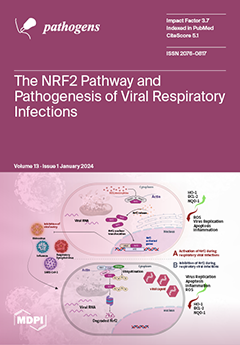Haemonchus contortus is a globally significant parasitic nematode in ruminants, with widespread resistance to benzimidazole due to its excessive and prolonged use. Given the extensive use of benzimidazole anthelmintics in Bosnia and Herzegovina, we hypothesized that resistance is prevalent. The aim of this study was to identify the presence of anthelmintic resistance to benzimidazole in
H. contortus from naturally infected sheep, goats and cattle in Bosnia and Herzegovina through the detection of the Phe/Tyr polymorphism in the amino acid at position 200 of the β-tubulin protein. From 19 locations in Bosnia and Herzegovina, a total of 83 adult
H. contortus were collected from the abomasum of ruminants. Among these, 45
H. contortus specimens were isolated from sheep, 19 from goats and 19 from cattle. Results showed that 77.8% of
H. contortus in sheep exhibited homozygous resistant genotypes at position 200 of the β-tubulin gene, with 15.5% being heterozygous. In goats, all tested
H. contortus (100%) were homozygous resistant, and no heterozygous resistant or homozygous sensitive genotypes were found. Cattle had 94.7% homozygous resistant
H. contortus, with no heterozygous resistant genotypes detected. In
H. contortus from sheep and cattle, 6.7% and 5.3%, respectively, displayed homozygous sensitive genotypes. This study, for the first time, highlights the presence of a resistant population of
H. contortus in sheep, goats and cattle in Bosnia and Herzegovina, using the rt-qPCR method. The resistance likely spread from sheep or goats to cattle, facilitated by shared pastures and the practice of transhumance, indicating a widespread and growing issue of anthelmintic resistance.
Full article






